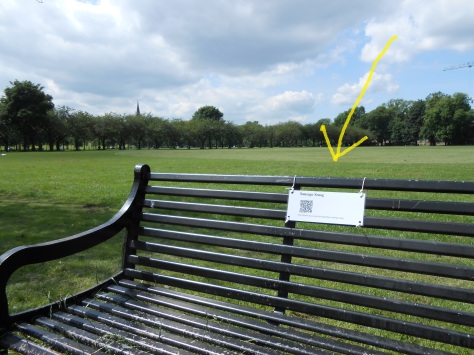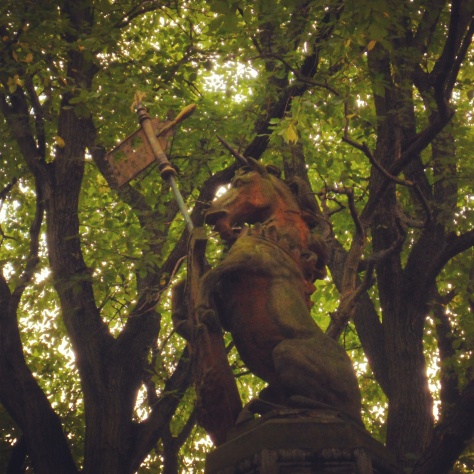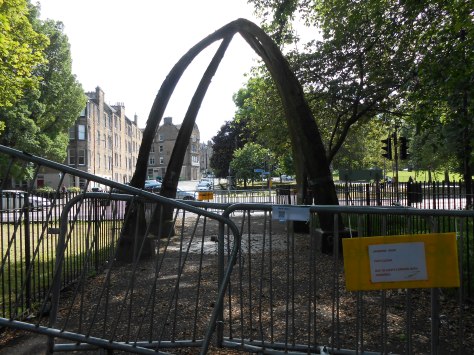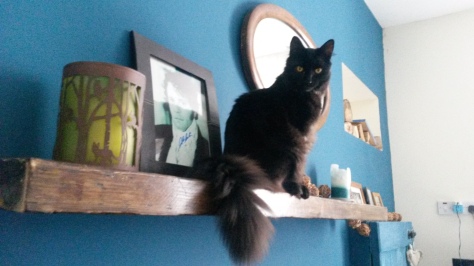We’re delighted to bring you a guest post from poet Claire Askew:
I first learned what zines were when I was in my late teens, and ever since then, I have loved them. For those of you who aren’t familiar with the concept, a “zine” – short for “fanzine” – is an often-hand-made publication with a smallish print run, created on a voluntary basis by a passionate individual or small team, and then distributed either for free or very, very cheaply. Zines are a great, grassroots way for people who care about politics, social justice and the arts to get their voices heard. They provide a safe and accessible space, away from the flashiness and spin of mainstream media, for discussion, comment and creativity.

Naturally, since the birth of the internet, zine production has waned – blogs and online forums provide the same sort of discussion space at the click of a mouse or the swipe of a tablet. However, writing on the internet is almost always a solitary activity – the key difference between a blog and a zine is that zines literally bring people together. You need to talk, face to face. You need to make decisions about content, editing and presentation. By bringing people together to do these things, zines have the power to build friendships, create networks and strengthen communities.
Imagine my excitement, therefore, when I discovered such a publication, doing these very things, in the middle of my own local area. Operating from bases across the country, Bethany Christian Trust is a charitable organisation that aims to meet the long-term needs of homeless people in Scotland: helping them to find and equip homes, offering support to overcome addiction, and working to break down social and educational barriers. Over 5,000 homeless people access their groups and services every year – and the chance to work on a free, community-based grassroots magazine is one of the many opportunities they provide.
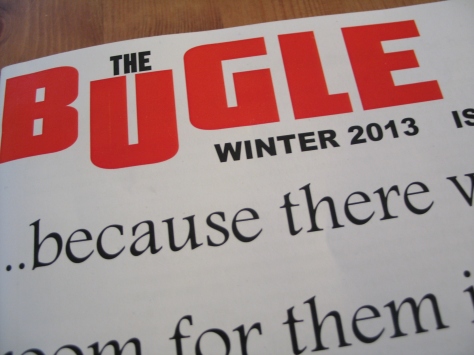
The Bugle – now on its 34th issue – provides a platform for Bethany’s service users to speak up about the issues that matter to them. A few weeks ago, I met some of the Bugle editorial team at Bethany’s offices in Leith, and got to see for myself the huge amount of dedication and teamwork it takes to put together a regular publication for public consumption. The Bugle runs first-person articles on the various issues surrounding homelessness – Issue 33, which the team gave me to look at, included pieces on the triumph of overcoming addiction, and the challenges presented by the UK’s newly-overhauled benefits system.

As we waited to go into the Learning Centre and begin work, I chatted with some of the service users about the Bedroom Tax – a hot topic in the brand-new issue 34. However, there are articles on all manner of other topics, too.
We write about what we care about,
one contributor told me.
This time, I felt really annoyed by the rude behaviour of this bus driver, so I wrote a piece about being more polite on the buses.

The Bugle also features artwork by Bethany service users, as well as creative writing. I had been invited to deliver a performance poetry session with the Bugle team, and was thrilled to discover that many of them were already poetry lovers. Most of the work I do is with “reluctant readers,” and I am used to having to warm up my audience, convincing them that poetry is not a scary thing and actually, anyone can write it. However, the Bugle team were way ahead of me – several of them regularly write poems for inclusion in the magazine, and reading the creative writing pieces intended for the Bugle’s pages is an important part of the editorial process. In a world where arts columnists are mourning poetry as a supposedly “dead” artform – while poets themselves bemoan the lack of dedicated readers – The Bugle is wonderful. Its editorial team are not only reading and writing poems – they’re also helping to keep this supposedly-dying breed of writing alive, by putting it into their publication and sending that publication out into the world for free.

By the end of the session, I’d introduced the group to some new performance poets – native Scots like William Letford and Jim Monaghan, as well as poets from further afield, like Omagh-born Catherine Brogan. I’d also learned a lot – in between the poetry chat, we also talked about major national issues, like sectarianism in Scotland and of course, independence. I came away wanting to spread the word about the great work The Bugle and its team do. They’re tackling issues, starting conversations, promoting the arts, and supporting other homeless and vulnerably-housed people in Scotland.
If this sounds good to you, you can check out all the Bugle back issues at their Issue page. Find out more about the work Bethany Christian Trust does by visiting their website. They’re also on Facebook and twitter.
And if you’re wandering around Leith and you come across a copy of The Bugle, be part of the project – pass it on.
55.971541
-3.176999


